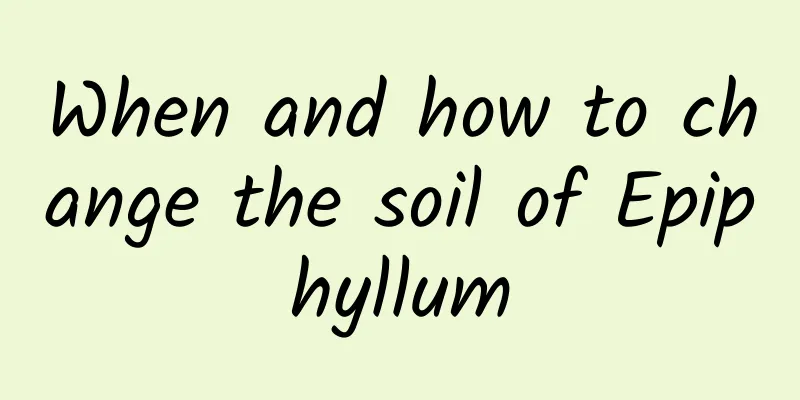How to fertilize tomatoes? What fertilizer is good?

|
There are many vegetable farmers in my country who grow tomatoes. If you want to make a profit from tomatoes, yield is the key. In the management process, scientific fertilization has a great impact on tomato growth, and the focus is different in different growth stages. Let’s learn how to fertilize tomatoes. What fertilizer is good? 1. Base fertilizer Before planting tomatoes, sufficient base fertilizer should be applied. It is recommended to use compound microbial fertilizer. This type of fertilizer contains organic matter, humic acid, beneficial biological bacteria and chelated trace elements, which can effectively improve the soil and increase soil permeability. 2. Fertilization during the planting period When planting and transplanting tomatoes, use liquid microbial agents mixed with water and use it as rooting water to water the roots of the tomatoes to promote root development, increase the survival rate, and reduce the occurrence of soil-borne diseases. 3. Seedling-promoting fertilizer After the tomatoes have taken root, use fully soluble water-soluble fertilizer to dilute with water for irrigation, flushing or drip irrigation. Apply 2-3 times in a row with an interval of 5-7 days to promote the growth of seedlings. 4. Fruit-enhancing fertilizer When tomatoes enter the fruit-setting period, use high-potassium water-soluble fertilizer for flushing or drip irrigation. Use it 3-4 times to supplement potassium, calcium and other elements to increase tomato yield and quality. 5. Topdressing in the middle and late stages For late-maturing tomato varieties, the growth and fruiting period is longer, so special attention should be paid to topdressing in the middle and late stages to prevent premature aging of tomatoes and affect yield. 6. Foliar spraying During the entire growth cycle, Chinese herbal nutrient solution is used for foliar spraying, mainly during the initial flowering period, peak flowering period, fruit setting period, fruit expansion period and after fruit harvesting to prevent diseases and inhibit insect pests. 7. Pay attention to the application of organic fertilizer Organic fertilizer should be composted at high temperature to avoid root burn and diseases caused by uncomposted organic fertilizer. 8. Medium and trace elements In tomato production, in addition to paying attention to the macroelements of nitrogen, phosphorus and potassium, we should also pay attention to supplementing trace elements such as boron, molybdenum, calcium and magnesium to prevent the occurrence of deficiency symptoms. To sum up, tomato fertilization should be based on its growth stage and should use different types of fertilizers, including organic fertilizers, microbial agents, water-soluble fertilizers and foliar fertilizers. At the same time, attention should be paid to the time and method of fertilization, as well as the supplementation of medium and trace elements.
|
<<: How to make Monstera leaves crack and how to deal with dead leaves
>>: How to make Zephyranthes bloom more and what to do after flowering
Recommend
Planting and Management Techniques of Corydalis yanhusuo
As an important Chinese medicinal material , Yuan...
Indoor pollutants that shorten your life by 10 years, 24 plants can help
Electromagnetic Radiation The hazards of electrom...
Differences between Sulfur Flower and Coreopsis
1. Leaf Difference The leaves of the sulphur aste...
The efficacy and function of goat milk flower
Treatment of gynecological diseases This flower c...
How long does Ranunculus bloom?
1. Flowering time Ranunculus blooms in spring eve...
How to grow ginger to get high yield?
Ginger originates from tropical rainy forest area...
Should I cut off the yellow leaves of the Phoenix bamboo?
1. Should I cut it off? The yellow leaves on the ...
Is it better to grow daffodils in soil or water?
Soil culture or hydroponics? Daffodils are better...
Diseases and pests of Rhododendron sabdariffa and their control methods
Pests of Rhododendron sabdariffa: Aphids symptom ...
It only takes 5 seconds to know whether your flowers need watering
1. Tapping method Use your finger joints to gentl...
The process of repotting succulent plants
The process of repotting succulent plants For exa...
How to reproduce the tuberose flower
Leaf cutting propagation This method requires bre...
What to do if your hands are spicy with chili peppers
1. Wash your hands with vinegar When your hands f...
What vegetables are suitable for growing in sandy soil?
The soil in sandy land is loose and breathable, b...
Flower language and value of Camellia sasanqua
Flower language of Camellia sasanqua The flower l...









